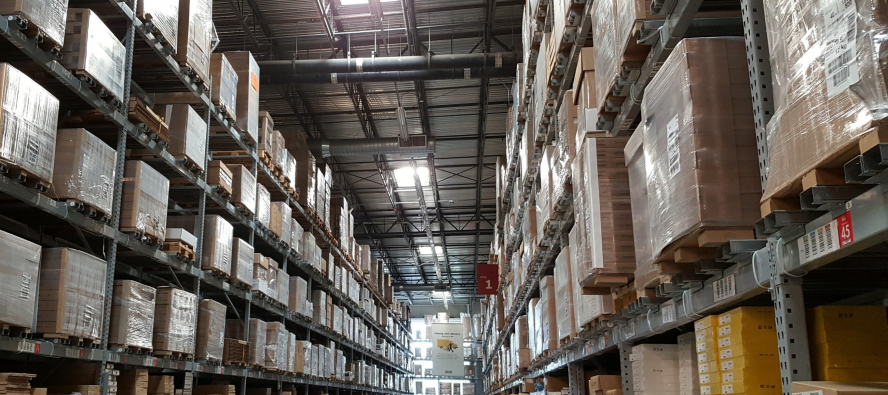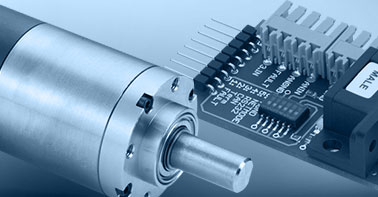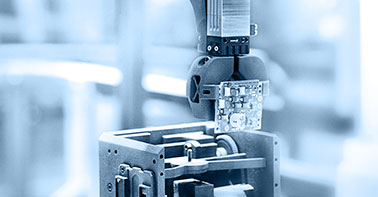- info@ems-ltd.com
- 0118 9817391
Home > PR > Beyond industry 4.0
Beyond industry 4.0
15/06/2021 - bringing products to market faster
15th June 2021
Filed under:
Industry 4.0. Blog

The World Economic Forum (WEF) has set up the Global Lighthouse Network — a group of 69 factories that form a shining example of superior technology integration and optimised processes. With the fourth industrial revolution well underway, facilities other than Lighthouse factories must also invest in equipment that can bring them up to speed. Here, Stewart Goulding, managing director at precision drive system supplier, Electro Mechanical Systems Ltd, explores how powerful and high precision micromotors can advance automated equipment.
The saturated retail market means competition is high and retailers must meet a variety of customer demands to stay ahead. Consumers have become accustomed to frequent product launches and rapid turnover of complex products, driving the need for manufacturing speed and agility. A culture of click and collect and next day delivery means retailers must be able to get high volumes of products from factory to customer — and fast.
A study by WEF found that over 70 per cent of businesses investing in technologies associated with Industry 4.0 are not able to take projects beyond the pilot phase. However, taking the necessary steps towards automation doesn’t have to involve hefty investment and colossal upfront costs. Upgrading automated equipment with precise and high torque motors provides an efficient way to enhance production lines and warehouse operations.
Warehouse data transmission
Warehouse logistics involve the organisation, movement and management of stored products before they are sent out for delivery. Digitalisation helps keep a record of essential logistic details, such as a product’s location in the warehouse and the time it arrived to be stored. This data can be transferred between equipment to coordinate processes and be sent to warehouse managers and operatives to monitor procedures.
Large volumes of data can be transmitted using fibre optic cables, which transport the information, such as online order contents and product location, by light signals. For data to transmit correctly without impairment, two optical fibres, each as thin as a human hair, must be joined together with superior precision.
Connection of the fibres can be performed using small mobile machines, which align the two pieces and then weld them together. High precision motors allow the machine to perform with placement accuracy to the nanometre.
Picking, transporting and placing robots
As well as a seamless data record, digitalisation has allowed warehouses to become automated, such as the Ocado hive-grid warehouse, which uses robots for all middle processes with human workers only required for loading and unloading deliveries.
An increasing number of warehouse tasks are being enhanced by automated equipment, but robots are mainly used for picking, transporting and placing. Driverless transport systems allow automated machines to digitally receive details of an order and then move to the relevant warehouse location to retrieve it. They use robotic gripper arms to lift the relevant products out of the target rack, and then transport and deposit them to the order packing space.
Using a high power motor allows quick movements of the robots when they are traversing between racks. Fine speed control of the motor ensures agile movements for picking the correct products and placing them in the right place. Warehouses can process thousands of orders a day, so speed combined with high accuracy is crucial to delivering orders quickly and correctly.
EMS Ltd is the sole UK and Ireland supplier of FAULHABER motors, which offer a superior combination of high torque and precision, while being compact enough to fit in machines with small space envelopes. In particular, the BXT H motor range can produce torque levels up to 92 milli newton-meters (mNm), and a continuous output of up to 60 watts (W). When combined with the complementary integrated speed controller, which only adds on 6.2 millimetres (mm) in length, mechanical speed can be controlled from 200–10,000 min-1.
The global Lighthouse network shares insight into how automation can increase productivity, but facility managers are now looking for ways to enhance their automated processes. Choosing precise, high torque motors increases the speed and accuracy of automated machinery, which helps bring products quickly from factory floor to customer door.
- Categories / Tags
- 1024...SR
- AEMT
- AESL
- Acceleration
- Agriculture
- Agritech
- Autoclave
- BHS
- BHT
- BHx
- BLDC
- BP4
- BRC Series
- BX4
- BXT
- BeBionic
- Bearings
- Bespoke
- Brushed
- Brushed DC Motors
- Brushless
- Brushless DC Motors
- Brushless Dc Motors
- Brushless Motor
- Buhler
- Building Automation
- COVID
- CXR
- Catalogue
- Company Update
- Controller
- Coreless
- Coventry
- Custom
- Custom Design
- DC Motor
- DC Motor Supplier
- DMN
- Dc Motor
- Design
- Dimatech
- Drones
- EDS
- EMS
- EMS News
- EV
- Encoder
- Ewellix
- Exoskeleton
- Expo
- FAULHABER
- Factory
- Faulhaber
- Flat
- GPT
- Galil
- Gearhead
- IEF3
- IMC
- Industry 4.0. Blog
- Inspection
- KAG
- LL06
- LM
- LVC
- Laboratory Automation
- Linear
- Linear Actuator
- Logistics
- M50
- M80
- MC3
- Maintenance
- Manufacturing
- Mechatronics
- MedTech
- Medical
- Medical Devices
- Medical Imaging
- Medtech
- Merkel
- Motion Control
- Motor
- Neurosurgery
- New
- Nidec
- Nidec Servo
- Optical
- Pain Relief
- Piezo
- Piezomotor
- Pipeline
- Planetary
- Planetary Gearheads
- Point Of Care
- Precision
- Precistep
- Process
- Production
- Quickshaft
- Robot
- Robotics
- Robots
- SKF
- SR Series
- Samples
- Small DC Motor
- Software
- Space
- Sponsorship
- Stepper
- Stepper Motor
- Stepper Motors
- TMS
- Testing
- Trade Show
- 1016
- 1660
- 1935
- 2017
- 2018
- 2020
- 2021



